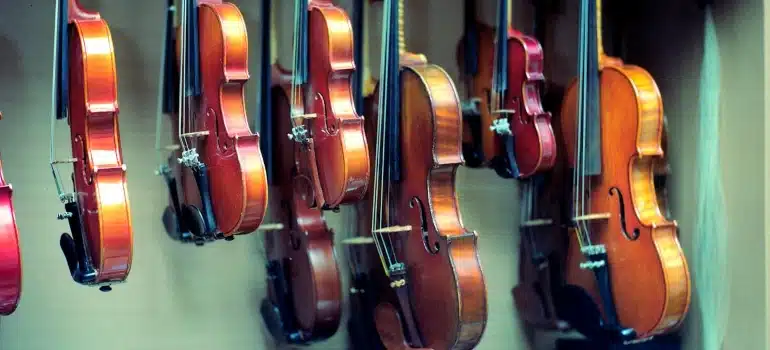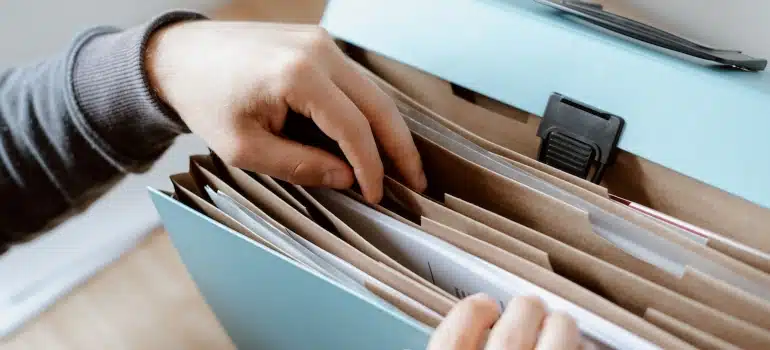How to move musical instruments long distances
If you have a musical store or a musical school that you need to move long distances, check out this guide. It has all you need for a safe and sound move. From how to disassemble the instruments, safely pack them up, and transport them to the final destination intact. Besides, you’ll get to understand what moving services to use depending on the type of the moving instrument. Therefore, read this guide, contact Pro Movers Miami, one of the best moving companies Miami has, and move musical instruments long distances without any stress.

Steps for a safe and sound relocation of musical instruments
Key steps to moving your musical instruments depend on the amount, type, and complexity of your items. For example, the steps will vary in case you are moving just one musical instrument or an entire musical store. After you weigh all the factors regarding your instruments, take the following steps:
- Choose a moving company: As soon as you find out about the move, search for commercial movers Miami has and schedule your move. Of course, a DIY move is not an option.
- Clean your instrument: Who knows better how to clean your valuable instrument than you? So, do it prior to the move or after your movers dismantle the pieces if necessary.
- Do regular maintenance before the move: This step can also be taken after the move and reassembly.
- Insure your instrument: Using moving insurance is a must. Moving companies offer moving coverage, so check what it includes or hire third-party insurance.
- Obtain the necessary packing supplies Or leave this step to your movers.
All in all, you don’t have to lift a finger (unless you want to) when you have the right movers by your side, commercial or piano movers.
Moving only one instrument?
Even though there is only one, such as a piano, it doesn’t mean that moving will be easy. However, it will certainly be less challenging when you hire the services of the piano movers Miami companies provide. When it comes to moving steps, decide when and how to clean the instrument. Then, if based on the type of your piano, check the disassembly methods. Of course, the fact that it’s only one instrument doesn’t change the fact that you need to hire moving professionals.
Moving a musical shop? Organize the move based on the complexity
Moving a musical shop requires careful planning due to the variety of delicate instruments and equipment involved. Here’s how to organize the move based on complexity:
- Assess Inventory: Make a list of all instruments and equipment. Identify fragile and high-value items.
- Plan for Each Instrument Type: The individual approach makes moving easier and more secure.
- Shelves and Furniture: Disassemble shelving units if possible. Wrap parts in bubble wrap and label them. Pack smaller furniture in sturdy boxes with padding.
Now, let’s check how to pack up and transport each instrument.

Types of instruments and how to move them long distances
If you are about to move musical instruments long distances, you should tackle each instrument individually. Here’s the list of instruments to tackle:
- Pianos: Use a piano dolly for transport. Secure the lid and pedals. Wrap in moving blankets.
- String Instruments: Use hard cases with padding. Loosen the strings slightly. Wrap cases in bubble wrap for extra protection.
- Wind Instruments: Disassemble and clean thoroughly. Pack in padded cases with cushioning. Label parts and pack them securely.
- Percussion Instruments: Wrap each drum individually. Use padded cases for cymbals. Secure all small parts in labeled bags.
How to move string musical instruments long distances
Start with violins, violas, cellos, and double basses. Each instrument type needs a hard case with interior padding. For violins and violas, loosen the strings slightly to relieve tension on the neck and bridge. Place the instrument in its case, ensuring the bow is secured in its designated spot, using bubble wrap for additional cushioning. Cellos and double basses need specialized cases with more robust padding. Loosen the strings and secure the bow separately. Use bubble wrap to cover the bridge and tailpiece, and place foam or padding around the instrument inside the case.
Guitars, whether acoustic, electric, or bass, require similar precautions. Loosen the strings and place the guitar in a hard shell case. Use foam or bubble wrap around the headstock, neck, and body to prevent movement inside the case. For additional security, wrap the entire case in bubble wrap or moving blankets.
For all string instruments, pack the cases in heavy-duty, double-walled cardboard moving boxes Miami companies offer. Fill any extra space in the box with packing peanuts or crumpled paper to prevent shifting during transit. Clearly label each box as “Fragile” and indicate which side should face up. If possible, use climate-controlled transportation to protect the instruments from extreme temperatures and humidity. Additionally, consider insuring high-value instruments to cover any potential damage during the move.

How to move wind instruments long distances
Wind instruments include flutes, clarinets, saxophones, trumpets, trombones, and tubas, each requiring specific handling. Start by disassembling the instrument into its main parts. For flutes and clarinets, separate the body, head joint, and foot joint. Wrap each piece in soft, lint-free cloth to avoid scratches, then place them in a hard case with internal padding. Saxophones should have their neck and mouthpiece removed and packed separately in padded bags within the case.
Trumpets and trombones need to be disassembled by removing the mouthpiece and sliding parts. Wrap each component in bubble wrap or foam padding, and place them in a hard case. Ensure the case has individual compartments for each part to prevent movement and damage. Tubas, being larger, require extra care. Disassemble any removable parts, wrap them in padding, and secure them in a case designed to hold large brass instruments.
Label the intruments
Once the instruments are packed in their cases, place the cases in double-walled, sturdy cardboard boxes. Fill any empty space within the boxes with packing peanuts, foam inserts, or crumpled paper to prevent movement during transit. Clearly label the boxes as “Fragile” and indicate which side should face up. If possible, use climate-controlled transportation to protect the instruments from extreme temperature fluctuations and humidity, which can damage delicate components. Additionally, consider insuring valuable instruments to cover any potential damage during the move.
How to move bulky instruments
If you want to move bulky instruments, prepare well. The first step is hiring white glove moving and storage services. How can they help? White glove movers offer climate-controlled storage and transport options. This is crucial for instruments sensitive to temperature and humidity changes, like wooden and brass instruments. The controlled environment prevents warping, cracking, and other damage.
- Specialized Equipment: Movers use specialized equipment, such as piano boards, dollies, and lifting straps, to move bulky instruments safely. This equipment minimizes the risk of damage and ensures the instruments are transported securely.
- Insurance and Liability: White glove moving services provide comprehensive insurance coverage for your valuable instruments. In the rare event of damage, you are protected against financial loss, giving you peace of mind.
- Customized Moving Plans: These services offer customized moving plans tailored to your needs. Whether you’re moving across town or across the country, they plan the move meticulously, considering the specific requirements of each instrument.
- Professionalism and Experience: White glove movers have extensive experience handling high-value and fragile items. Their professionalism ensures that every aspect of the move is conducted with the utmost care and attention to detail.
- Time and Stress Savings: Hiring white glove services saves you time and reduces stress. They handle every aspect of the move, from packing to transportation to reassembly, allowing you to focus on other important tasks.
Now, let’s see the types of bulky musical instruments and how to move them long distances.

How to move harps
Harps are delicate and bulky, requiring careful handling. First, cover the harp with a padded cover to protect the frame and strings. Remove and pack the pedals separately, wrapping them in bubble wrap. Use a sturdy harp transport case if available. Load the harp onto a dolly and secure it with straps to prevent movement. When placing it in the moving vehicle, ensure it stands upright and is cushioned with moving blankets. Finally, check the temperature and humidity in the transport vehicle to avoid damage to the wood and strings.
How to move grand pianos
So, moving a grand piano involves disassembling and protecting each part. Start by removing the lid, pedals, and legs, wrapping each piece in moving blankets or bubble wrap. Use a piano board to secure the piano body and tilt it onto the board with assistance. Secure the piano to the board with straps. Load the piano carefully into the moving truck, ensuring it is cushioned with additional blankets. Avoid placing heavy items on top of the piano. Consider hiring professional piano movers for this complex task to ensure safety and prevent damage.

How to relocate tubas
first, disassemble the tuba, separating the mouthpiece and other removable parts. Wrap each part in bubble wrap, focusing on the valves and bell. Place the tuba in a hard case designed for its size, filling any gaps with foam inserts. The hard case should then be placed in a sturdy, double-walled cardboard box, with extra padding around it. Label the box as “Fragile” and ensure it stays upright during transit. Secure the box in the moving vehicle to prevent shifting and potential damage.
Move musical instruments long distances: Drum sets
Drum sets consist of multiple large components that need individual attention. Remove the drum heads and pack them in padded cases. Disassemble the hardware, including stands and pedals, and wrap each piece in bubble wrap. Use hard cases for the drums and cymbals, filling any empty spaces with foam or bubble wrap. Stack the cases in a sturdy box, ensuring they are cushioned and secure.

How to move double basses
Double basses require special handling due to their size and fragility. Start by loosening the strings to relieve tension on the neck. Cover the instrument with a padded case, ensuring all parts are protected. Remove and wrap the bridge and endpin separately in bubble wrap. Use a hard case if available, placing the double bass inside and securing it with padding. Place the case in a double-walled cardboard box with additional cushioning.
How to store musical instruments
Storing musical instruments properly ensures their longevity and quality. Here’s a guide on how to store various types of instruments:
- String Instruments: These require climate-controlled storage units Miami companies offer. Store string instruments like violins, guitars, and cellos in hard cases with interior padding. Loosen the strings slightly to relieve tension. Place silica gel packets inside the cases to control humidity. Position the cases upright and ensure they are not stacked or leaning against each other to prevent damage.
- Wind Instruments: Disassemble wind instruments such as flutes, clarinets, and saxophones. Wrap each part in soft, lint-free cloth and store them in their respective padded cases. Place the cases in a sturdy box, filling any gaps with foam or bubble wrap.
- Percussion Instruments: Place these in a dry, climate-controlled storage unit. For drum sets, disassemble and wrap each drum in bubble wrap. Use hard cases for each drum and cymbal, ensuring they are padded adequately. Store the cases in a vertical position to save space and avoid stacking. For smaller percussion instruments like tambourines and maracas, use sturdy boxes with adequate padding.
- Brass Instruments: Clean brass instruments like trumpets and trombones thoroughly before storage. Place them in hard cases with padding. Store the cases on shelves or in a designated storage rack to prevent direct contact with the floor and other instruments.
- Keyboards and Pianos: Ensure the keyboard lid is closed and locked. Electronic keyboards should be stored in their original boxes with padding, if possible, or in hard cases.

What moving services to use when you want to move musical instruments long distances
There are numerous moving services Miami companies provide. First and foremost, you should hire movers that deal with moving musical instruments. Then, you should opt for packing services. After choosing these, consider hiring specialized movers such as white glove movers, piano movers, or luxury movers. It is recommended that different moving services be hired by the same moving company since such movers work simultaneously.
Then, you should also hire location-related movers, such as movers in Fort Lauderdale, for example. Of course, if you are moving a musical shop, then hiring commercial movers is a must. These movers will not only deal with the moving labor. They will also tackle the challenges regarding the documentation, or at least they will help you navigate the papyrology. Also, if you are moving interstate, hire interstate movers in FL.
How to move musical instruments interstate
Moving musical instruments interstate requires careful planning and professional help. Hiring interstate movers in Florida ensures your valuable instruments are handled with care and expertise. Interstate movers in Florida, experienced with delicate items, provide climate-controlled transport to protect instruments from temperature and humidity fluctuations. They use specialized equipment to load and unload heavy items like pianos and harps safely. Professional movers also offer insurance, giving you peace of mind during the move.
Documents needed for an interstate move of musical instruments
When you are about to move musical instruments long distances, specifically interstate, don’t miss out on obtaining the following documents:
- Moving Estimate: This document provides a detailed cost breakdown for your move, including transportation, labor, packing services, and insurance. It’s important to get a binding or not-to-exceed estimate to avoid unexpected costs
- Bill of Lading: This legally binding contract between you and the moving company details all items being transported, the moving rate, payment method, and insurance information. It serves as a receipt and is crucial for protecting your rights during the move.
- Order for Service: This document outlines the services you have requested from the moving company, including the estimated weight of your shipment, pick-up and delivery dates, and any special services needed. Both you and the mover must sign this document.
- Inventory Documentation: This list details all items being moved and their condition at the origin. It helps track your belongings and is essential for filing any claims for lost or damaged items.
- Your Rights and Responsibilities When You Move: This pamphlet, provided by the moving company, explains your rights and the mover’s responsibilities. It includes important information on handling complaints and choosing a reputable mover.

Use moving insurance when moving instruments long distances
When moving instruments long distances, using moving insurance is essential to protect your valuable items. Moving insurance offers financial protection in case of damage or loss during transit. So, there are two primary types of coverage: Released Value Protection and Full Value Protection. Released Value Protection is a minimal coverage that compensates you at 60 cents per pound per item, which might be insufficient for high-value instruments. Full Value Protection, on the other hand, provides coverage based on the current market value of the item, allowing for repair, replacement, or cash settlement.
So, to ensure comprehensive protection, opt for Full Value Protection, especially for expensive and delicate instruments like pianos, violins, or harps. Document the condition of your instruments with photos before the move, and keep all receipts and appraisals. This documentation will help support any claims you may need to file.
FAQs about how to move musical instruments long distances
These are the questions to ask your movers before the actual move:
- How should I prepare woodwind instruments for long-distance moves?
- Are there specific packing materials recommended for brass instruments?
- Can I transport musical instruments in my car instead of the moving truck?
- What are the best practices for moving electronic musical equipment like keyboards and amplifiers?
- How do I ensure climate control for my instruments during a long-distance move?
- What steps should I take to document the condition of my instruments before moving?
- Is it necessary to hire professional movers for large instruments like pianos and harps?
- What should I do if my instrument gets damaged during the move?
- Are there any special considerations for moving antique or rare musical instruments?
- What if there’s a delay in the moving process?
Types of moving estimates and how to choose the best for your instruments
There are three main types of moving estimates Miami companies offer: non-bidding, binding, and binding not-to-exceed. A Non-Binding Estimate is based on the initial estimate but can change depending on the actual weight of your shipment, potentially leading to higher final costs. A Binding Estimate offers a fixed price based on the estimated weight, providing cost certainty regardless of the actual weight. The Binding Not-to-Exceed Estimate combines the benefits of both, ensuring that the price won’t increase if the weight exceeds the estimate but allowing you to pay less if the weight is lower. For delicate and valuable musical instruments, the Binding Not-to-Exceed Estimate is often the best choice, offering financial protection and peace of mind during the move.

Move your musical instruments with Pro Movers Miami
Ensure your musical instruments are safe during your move. Trust Pro Movers Miami for professional, secure, and efficient relocation services. Our experienced team uses specialized equipment and expert packing techniques to protect your valuable instruments from damage. Whether it’s a grand piano, violin, or drum set, we understand the unique needs of each instrument and guarantee their safe transport. Our climate-controlled vehicles ensure your instruments are shielded from temperature and humidity changes. Contact us today for a free quote, and move your musical instruments long distances with ease. Your music deserves the best—choose Pro Movers Miami!
